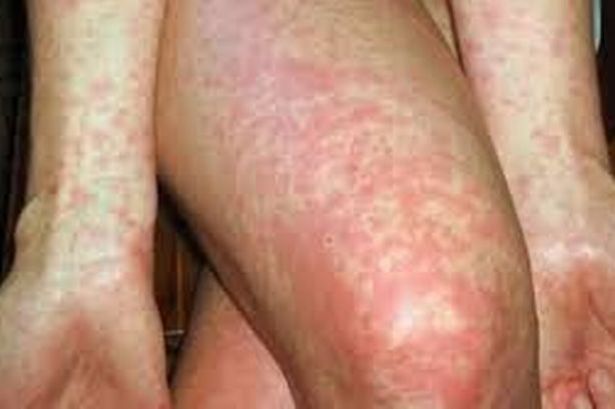Scarlet Fever cases rise in Conwy, Denbighshire and Anglesey

Cases of scarlet fever are continuing to rise across North Wales, new figures show.
According to Public Health Wales the reported number of cases up to April year-on-year increased from 198 in 2016 to 207 this year.
Conwy and Denbighshire saw the biggest monthly rises. In February 2016 there were only four cases in Conwy, but during the same month this year there were 25.
As for Denbighshire during January and February in 2016 public health officials reported just six cases, but during the same period this year there were 32.
There has also been a rise in scarlet fever numbers in Anglesey, rising from seven in the four months to April last year to 27 for the same period this year.
However Flintshire, Wrexham and Gwynedd have seen decreases year on year.
In Gwynedd cases dropped from 68 in the four months leading to April 2016, to 33 this year. In Flintshire comparing the same period numbers dropped from 24 to 19. In Wrexham there was also a decline showing 32 cases in the first four months in 2016, to 29 in 2017.
There was a spike in figures in March with 67 cases reported across North Wales.
Dr Chris Williams, Consultant Epidemiologist for Public Health Wales, said: “We have monitored a seasonal increase in scarlet fever in North Wales, which is now returning usual levels. This seasonal pattern is expected for scarlet fever.
“People should be aware of the symptoms, which include a fine pink-red rash that feels like sandpaper, a high temperature, a flushed face and a red, swollen tongue. Children under the age of 10 are most commonly affected, but people of all ages can be infected by the bacterium that causes scarlet fever.
“Most cases of scarlet fever will clear up on their own, but it is still best to seek medical advice. People diagnosed with scarlet fever should stay away from others until they have been on a course of antibiotics for at least 24 hours, to avoid passing on the infection. The spread of infection can be also be reduced by washing or disposing of tissues or handkerchiefs straight away, washing hands frequently and thoroughly, and not sharing eating utensils, clothes, bedding and towels.”
Scarlet fever: The facts
Scarlet fever was the biggest cause of children’s deaths in the early 20th Century, however nowadays it can be easily treated with antibiotics.
Who can catch scarlet fever?
Anybody can catch scarlet fever, however around 80% of cases of scarlet fever are in children under the age of ten.
Is it contagious?
Yes! Scarlet fever is very contagious and can be caught by breathing in bacteria from an infected person’s coughs and sneezes, touching the skin of a person with a scarlet fever rash skin and sharing contaminated towels, baths, clothes or bed linen.
What are the symptoms?
The symptoms of scarlet fever include a sore throat, headache, high temperature, flushed face and swollen tongue. The distinctive ‘scarlet’ pink-red rash develops 12 to 48 hours later.
How is it treated?
Anyone who thinks they have symptoms of scarlet fever should contact their GP. In most cases the illness will be treated with antibiotics and the ill person is advised to stay at home for at least 24 hours after the start of antibiotic treatment.
Have your say on this story using the comments section below





